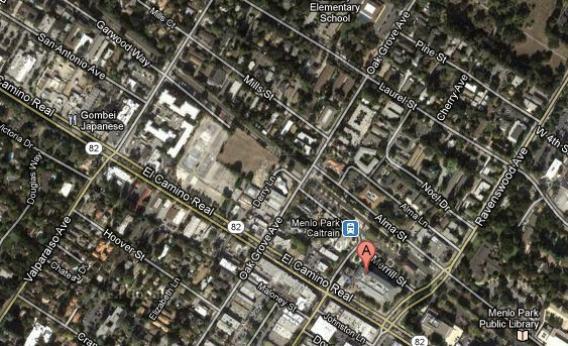I love Thomas Friedman relentless advocacy for sensible immigration policy and improved investments in education and research so America will keep having the human capital necessary to fuel the Silicon Valley jobs engine. But I hope to some day recruit him to my pet cause of improving real estate regulation, because the striking thing is that if we were training more smart engineers here at home and allowing more smart foreign engineers to move to the US it’s not clear that we’d have anyplace to put them.
When America’s auto industry was being built, capital rushed into the new companies and the Detroit area boomed as Americans rushed to get in on the ensuing bonanza. As of last week, capital is rushing in to Facebook headquarters in Menlo Park, but as Jed Kolko explains there will be no local boom in jobs and population:
But because Facebook is in the Bay Area, its IPO will create losers. Here’s why. If Facebook were in Texas or North Carolina, developers would have been building new homes in anticipation of this day. But in the Bay Area, water and the hills leave little land for development: the area in the bay under the Dumbarton Bridge would be an easy commute to Facebook if you could only build housing on the water. In addition, building regulations make development difficult on the precious flat land that exists. As a result, little new construction is underway in the Bay Area – far less than in other metros with similar job growth.
And I can’t emphasize enough the extent to which the land issue is a red herring. We’re not talking about farming here, we’re talking about building houses for people. San Mateo County, where Menlo Park is located, has about 40 percent the population density of Bergen County in New Jersey. It would be trivially easy to fit more people there. But it isn’t simply “difficult” to create dense housing stock, it’s basically illegal. Menlo Park contains vast swathes of land zoned as fit only for “residential estates” where by law lots must be at least 20,000 or 15,000 square feet per home. Even in the relatively small portion of the city where apartment buildings are legal, they’re subject to the following rules:
(1) Minimum lot area – Seven thousand square feet;
(2) Minimum lot dimensions – Eighty feet width, one hundred feet depth for lots ten thousand square
feet or more in area; seventy feet width, one hundred feet depth for lots less than ten thousand
square feet in area;
(3) Setbacks:
(A) Front Yard. There shall be a front yard setback equal in depth to at least fifteen percent of the
total lot width at the front property line. In no case shall this distance be less than twenty
feet.
(B) Side Yard. There shall be an interior side yard setback of at least ten feet. Corner side yard
setbacks shall be a minimum of 15 feet from the street side of a corner lot.
(C) Rear Yard. There shall be a rear yard setback equal in depth to at least fifteen percent of the
total lot width at the front property line. In no case shall this distance be less than fifteen feet.
(D) Distance between buildings. The minimum distance between main buildings on a lot shall be
one-half the sum of the height of those buildings, but in no case shall this distance be less
than twenty feet. The minimum distance between a main building located on one property
and a main building located on an adjacent property shall not be less than twenty feet.
(4) Land cover by all structures shall not exceed thirty percent;
(5) Height of structures shall not exceed thirty-five feet;
(6) Driveways and open parking areas shall not exceed twenty percent of lot area;
(7) Landscaping and open spaces, not including driveways and open parking areas, shall occupy not
less than fifty percent of the lot area;
Note that doesn’t make Menlo Park unusual. It’s instead quite typical for suburban America except for the fact that it’s smack dab in the middle of a booming sector of the American economy. But this all amounts to a statutory cap on the population of the Silicon Valley area. Not only is most of the developable land reserved exclusively for large single-family detached houses, but even the small amount of land that has been set aside for denser dwellings can’t be developed very densely at all. What’s wrong with a building of over 35 feet? Why is it important to restrict building footprints to 30 percent of the lot?
